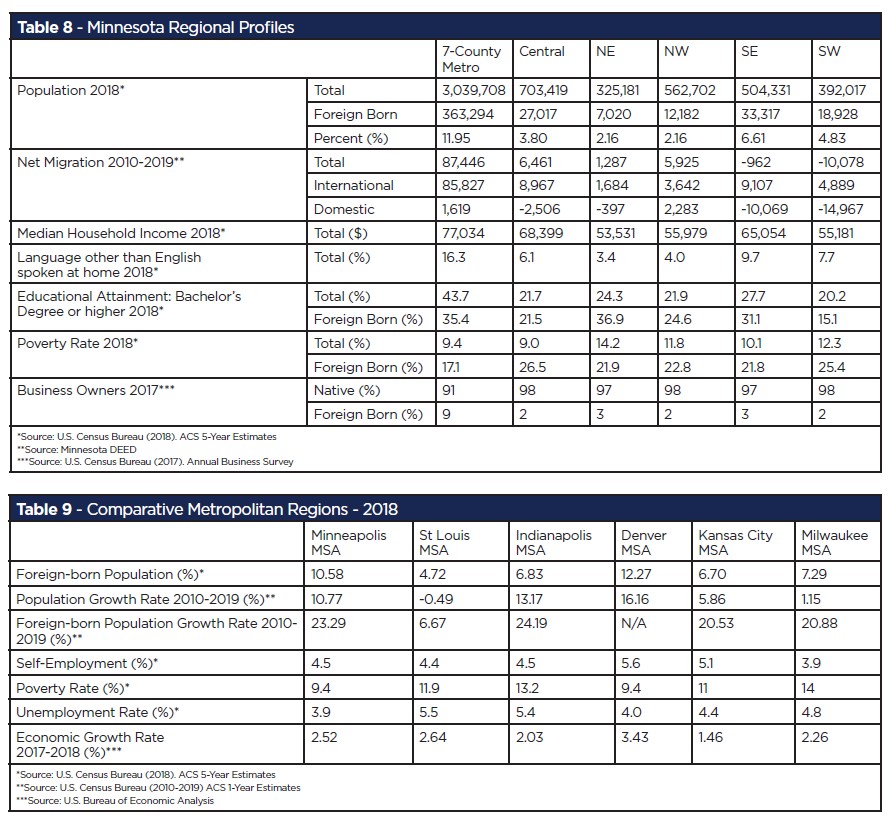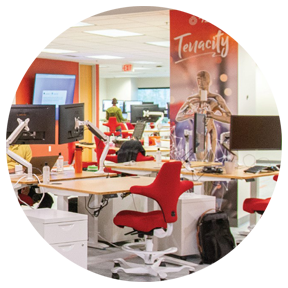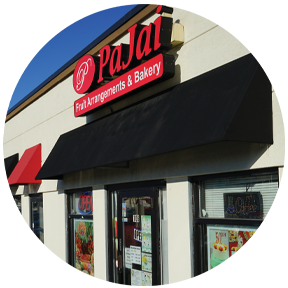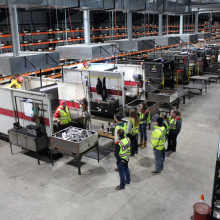Economic contributions by region
Economic contributions by region
-
The Twin Cities metro area’s foreign-born population is vastly different from the rest of Minnesota.
-
Minnesota is home to several foreign-born communities clustered throughout the state, demonstrating their statewide economic value.
Immigrants are more geographically concentrated than native-born citizens, no matter what geographical unit is used. To facilitate further analysis of immigrants in Minnesota, this report divides the state into six regions: Central, Twin Cities metro, Northeast, Northwest, Southeast and Southwest. Seven key economic indicators are used to compare the regions (table 8). For a county-by-county list of each region, see Appendix Table A2. The Southeast, Southwest and Twin Cities metro regions have the highest percentages of foreign-born populations in the state. It is worth noting that while the Central region only has a foreign-born population of about 4%, it saw the largest increase in the state between 2010 and 2019 at over 50%—far outpacing the statewide growth rate of 25.8%. In many of the regions, educational attainment among the foreign-born population matches or outpaces the native-born population. This is notable in the Northeast region where the gap is over 12 percentage points. An explanation for the gap in the Northeast and Southeast regions is the concentration of jobs in the high-skilled health care and educational services industries. As expected, languages other than English are spoken in homes in the areas with higher foreign-born populations. The poverty rates in all regions are at least seven percentage points higher for the foreign-born population. Surprisingly, there is no discernable trend among foreign-born business ownership in the non-metro area regions; they all hover between 2% and 3%.

Throughout the state, organizations have been created with the purpose of helping those who are new to an area make solid community connections. Such is the case in Austin, Minnesota. The Welcome Center is designed to help welcome new residents to the community and connect new and existing residents on important topics such as education, housing, faith-based organizations and other important community assets. Its mission is: Empowering diverse community engagement through guidance and connections. To provide a place to welcome their new neighbors, provide guidance and services to assist newcomers in their transition into the community. They collaborate with agencies to address multicultural issues, provide interpreting services, and develop programs and services that open economic opportunities to newcomers. As a 501(c) (3) nonprofit organization, the Welcome Center is able to carry out its mission by receiving support from the local United Way and the Hormel Foundation.
The foreign-born population in the Twin Cities Metro region has a markedly different makeup than the rest of the state, both in total number and percentage. This affects other aspects of the community.
It is useful to compare it to peer metro areas, which were selected based on location and relative population size (table 9). Minneapolis and St. Paul have a relatively high growth rate for their total and foreign-born populations. Poverty and unemployment rates are the lowest among the peer metro areas. Self-employment is right at the median for these peer metro areas. Recent economic growth, measured by changes in GDP, shows that Minneapolis-St. Paul is growing moderately compared to its peers.
With support from The McKnight Foundation
![]()











